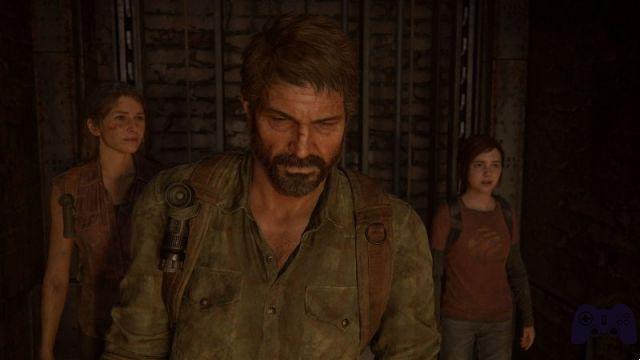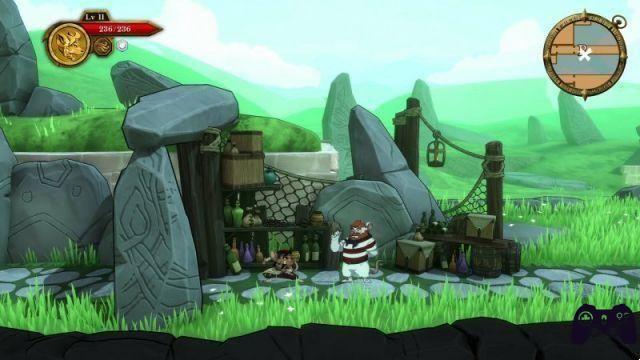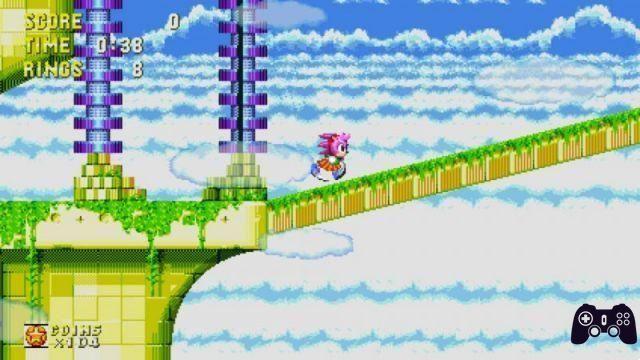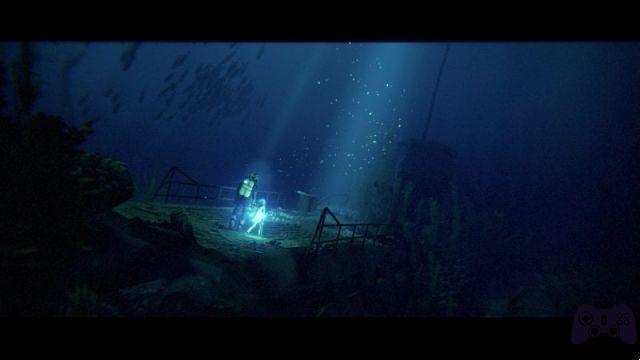The video game market for PC In recent years it has become a truly difficult environment, both for end users and for specialized critics. Of course, it's never been a walk in the park to navigate different configurations, features missing at launch, drivers that fry your GPU, glitches that make it impossible to complete campaigns or ruin saves, mysterious glitches, and finally, the wonderful and always present optimization topic. .
However, for some time now the situation has worsened even more due to the semiconductor crisis, the phenomenon of miners and resellers, as well as a pricing policy that has made even what was always the mid-range of GPUs, and that today in The fact does not exist: acquiring a new generation video card designed for 1440p for less than a thousand euros has become a seemingly impossible challenge, and with it the telephone prefix percentages of those who have a configuration of mid/high range game.
Here she is PC version of The Last of Us Part 1 In many ways it constitutes the synthesis of all these distortions. The necessary (but unusually long) shader precompile phase, in which the processor is fired up to wood-oven temperatures, tells us a lot about what's wrong with releasing a product under these conditions, but for a number of logical commercials (see (in relation to the television series) necessarily had to reach the market and which, for the same reasons, was not communicated to the editorial team before its premiere, since they were perfectly aware of its problems and feared a unanimous rejection .
At the same time, the recent example of Marvel's Spider-Man demonstrates how games on the Windows platform can change face overnight, perhaps after the embargo on in-depth articles, which are therefore being analyzed, expires. a product that no longer exists. ; because in the end this is what we do: we offer as accurate a description as possible of what we see and feel, but the crystal ball is not part of the standard equipment of a video game journalist.
And then, who knows, maybe tomorrow or in a week a gigantic patch will arrive that will make everything we are going to tell you obsolete, but until then this is our review of the PC version of The Last of Us Part 1.
The game: story, structure and gameplay.

If you are a purely PC user and this is your first contact with The Last of Us, give us a few lines to tell you about the game itself: an action and survival game set in a post-apocalyptic world, devastated twenty years earlier by the sudden spread of a fungus responsible for transforming many people into ferocious mutants, which burned the cities and forced the survivors to take refuge in fortified settlements under the control of the army.
Introduced by a dramatic flashback, the history What is told is that of Joel, a man hardened and violent by events, who lives off smuggling with his partner Tess until he comes across a different delivery order than usual: he has to accompany a girl, Ellie, to a controlled research center. by the rebel faction of the Lights. A mission of fundamental importance, given that it is the first human being apparently immune to infection.

Based on the classic narrative elements of road movies, Neil Druckmann tells a deep human story in the game, full of very well characterized characters, of a bond that progressively strengthens and of a violence that is not only that of the infected, but also and above all of those who survived the catastrophe and lost their humanity, like the teams of ruthless marauders that Joel encounters. and Ellie. trip.
The plot is based on a the game is still relevant, in which the protagonists face hordes of enemies within generally very large scenarios, which allow them to alternate, depending on the case, a stealth approach and open combat, always attentive to shelters and ammunition, and then collect artisanal resources. and collectibles while solving small environmental puzzles.
The concept of remake and the differences with the original

The Last of Us Part 1 if you start remake of the title originally published in 2013 on PS3 and remastered the following year for PS4. As we have explained many times, the term in question indicates a complete technical change that acts on geometries, animations, resources and effects, giving us an experience that is visually renewed but also in line with the times on the gaming front, refined for the occasion.
The story, dialogue and character characterization do not change, as does the structure: the campaign of The Last of Us Part 1 (and that of the Left Behind expansion, included in the package) It reserves no surprises for those who have already completed the game., perhaps several times; but it is certainly capable of re-proposing those sequences in a different, more conscious and coherent way compared to the work done with Part 2, as also demonstrated by the changes to the interface and accessibility options, as well as the animations. from the workbench that Joel uses to upgrade his equipment.

However, we were also talking about the gameplay, which in this case can have improved routines in terms of artificial intelligence of enemies; In particular, humans, who tend to have a greater perception of space and what is happening around them, identify the corpses of their companions and immediately alert others, implementing group attack strategies that are a little more elaborate than the original version. which lead to frenetic confrontations in which you often have to move, sink and retreat.
However, it is inevitably the technical sector that presents the most obvious signs of this "adaptation" operation of the Naughty Dog saga, taking advantage of the technologies that the development team used in the second chapter to give us substantially more detailed and better animated characters, which move more convincingly within renovated settings, embellished with textures and effects that often give them a completely different appearance.
The PC version

And here we are finally talking about PC version of The Last of Us Part 1 and its problems, starting from the aforementioned pre-compilation phase of the shader, which despite being important for performance purposes, in this case lasts a long time (half an hour) and we were forced to restart it several times since it implies abnormal use of the processor, causing Shock at very high temperatures.
It seems that the first patch has somewhat mitigated this phenomenon, but for the moment it does not address the other critical issues of a port that, we repeat, hit the market in frankly unacceptable conditions by commercial logic that clashed with obvious organizational shortcomings. The key word is optimization, and it's a concept that whoever edited the PC version of The Last of Us Part 1 would do well to review.

Let's be clear, on the Windows platform it is certainly not the first time that we find ourselves in such a situation: we cannot adjust the game graphics based on the desired performance due to the lack of reference hardware (aside from the Steam Deck, which here has to make do with minimal presets), developers often rely on the ability of more powerful GPUs (and drivers optimized by someone else) to compensate for their shortcomings.
In this specific case The Last of Us Part 1 simply cannot run at maximum on video cards with less than 12 GB of RAM- The graphics options screen is extremely clear in this regard and reports memory usage based on adjustments made to resolution and presets and/or individual elements on the front. Forcing your hand leads not only to experiencing noticeable drops in frame rate in the busiest situations, but also and above all shock and freezing.

Being limited by the 8 GB of memory of an RTX 3070, we tried to run several tests to understand what compromises were within our reach. Well, the sequences that you will see shortly in the video review of The Last of Us Part 1 for PC were captured in 1440p and 60fps using maximum preset (which corresponds to the traditional "high") in combination with a DLSS in "quality" that brought the initial resolution to 960p.
If you want to settle for a slightly lower frame rate, 50 to 60 fps, you can opt for 1800p always with DLSS quality, while if you want to resort to 30 fps you can play with the 2160p card always with the maximum preset. and DLSS, but without achieving a very satisfactory frame rate. Considering the game's performance on PS5 and the Sony console's use of presets that often correspond to ultras on PC, it's clear that this is terrible results.

That said, we'd be lying if we said that at 1440p and 60fps The Last of Us Part 1 is either a bad game to look at or has issues that go beyond performance: in our experience, preshading aside, crashes have always occurred due to attempts to force the hand to use combinations of resolution, quality presets and frame rates above the capabilities of the GPU. Although we ended up exceeding those requirements by about 1 GB, we were able to enjoy it. a fluid and visually striking experience.
However, we know that not everyone did so well and that, in general, rewarding that work would send a very bad message. At the same time, the review evaluates the product as a whole and the quality of the conversion, in this specific case its optimization, represents only one of the aspects that make up the small number that you will find at the bottom. How much and how to lower it compared to the evaluation of the PS5 version is not an exact science and, above all, it frames a situation that, as was written at the beginning, is inevitably destined to change.
PC system requirements
Test setup
- Processor: Intel Core i5 13500
- Video card: NVIDIA RTX 3070
- Memory: 32GB RAM
- Operating system: Windows 11
Minimum requirements
- Procesador: Intel Core i7 4770K, AMD Ryzen 5 1500X
- Scheda video: NVIDIA GTX 970, AMD RX 470
- Memory: 16GB RAM
- Storage: 100 GB of space required
- Operating system: Windows 10 64-bit
Recommended requirements
- Procesador: Intel Core i7 8700, AMD Ryzen 5 3600X
- Video scheme: NVIDIA RTX 2070, AMD RX 5700XT
- Memory: 16GB RAM
- Storage: 100 GB of space required
- Operating system: Windows 10 64-bit
Conclusions
Tested version PC with Windows digital delivery Steam Price 59,99 € Holygamerz.com 7.5 Readers (92) 5.2 your voteThe Last of Us Part 1 is the excellent remake of an extraordinary game: an experience of great impact on a narrative level, to which the remake made by Naughty Dog gives a renewed look, involving us in an adventure full of significant moments: yes yes You haven't done it yet, you should play it. However, the conversion created in collaboration with Iron Galaxy has many, many problems related to optimization and right now would force you to make big concessions: it is better to wait for the inevitable updates (and perhaps a discount) before proceeding with the purchase.
PRO
- A masterpiece in terms of narrative and direction.
- Extraordinary technical renovation, renews the experience.
- Refined and still exciting gameplay
AGAINST
- Really too demanding in terms of requirements.
- Several bugs waiting for a patch
- Excessive price for a new version.






